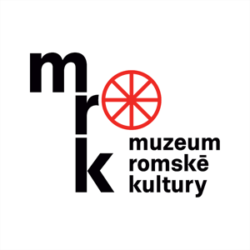Koloman Sendrej
Koloman Sendrej, born around 1920, Kokava nad Rimavicou, Poltár district
-
Testimony abstract
Koloman Sendrej enlisted in the Slovak Army on 1 October 1942, serving in the east near the Polish border in the villages of Palota and Medzilaborce. After the [Slovak National] Uprising broke out in August [1944], the Germans captured the entire battalion on 1 September. On the order of Commander Adamica, the soldiers had to surrender their weapons and their papers were taken from them. They were then loaded into wagons in the village of Michalovce and taken via Hungary and Vienna to a camp[1] in Germany. Travelling in the wagon with Sendrej was a Romani man, Dono, from the village of Tisovec, who managed to cut a hole in the floor and lower himself down while the wagon was moving. He survived the escape, but when he got back to Tisovec he discovered that all the local Roma had been shot and burned as alleged partisans, and only one girl had survived by hiding under the bed.
On the way to Germany, the train with the prisoners stood on the track in Budapest for three days because they had just bombed the bridge. The gendarmes removed the barbed wire from the doors of the carriages, and as the prisoners had not been given food or drink for three days, they sold their coats and blankets on the spot and used the money to buy pumpkins and melons, with which they staved off hunger and especially thirst. In the [Hungarian] city of Miskolc, the train stopped at a well, but no one gave them a drink. When one commander, a priest, urged the soldiers to give the prisoners water, they beat him. In Vienna they were then given semolina soup.
In Germany, Koloman Sendrej spent three months in a camp. There were about twenty-five Roma there; he lists the Polhošes, the Červeňáks, Kožuchos, Šaňo, and Oláh, who changed his name to Orvaš after the war, as well as Roma from Ratková and from Slavošovce, and Števo Bijaj from Murán. Then they were moved to the French border, Cologne, Düsseldorf and Hannover being mentioned specifically. They were fed once a day, and chopped down trees in the forest, three of them having to cut four cubic metres of wood a day. After three or four months, about six of them, including Sendrej, escaped and voluntarily joined the American army. They wore armbands with the inscription Czechoslovak Division. In Kraslice they were, in Sendrej's words, "something like police," and on June 16 [1945] the Americans offered to send them as volunteers to the Japanese front – they would get American citizenship, dollars, and first spend a month's leave in Sokolov, where an armoured train would be waiting to take them to Japan. Sendrej refused out of fear, but his Romani friend Novák from Žiár nad Hronom accepted the offer; three years later he received a photograph from him, which showed that he had become chief of staff.
- [1] Not specified.
Dono, mentioned above, lived to see the end of the war. The girl who hid from the Germans under the bed in Tisovec also survived; later she lived in the village of Baňa. In 1992 Sendrej went to look for Štev Bijaj from Murán to register with the authorities,[1] but he was informed that he had already died.
- [1] In 1992 an inventory was taken of people who had actively participated in the anti-fascist resistance or were victims of fascism; they were to receive a monthly annuity as compensation.
How to cite abstract
Abstract of testimony from: HÜBSCHMANNOVÁ, Milena, ed. “Po židoch cigáni.” Svědectví Romů ze Slovenska 1939–1945.: I. díl (1939–srpen 1944). 1. Praha: Triáda, 2005. ISBN 80-86138-14-3, 278-280 (ces), 281-283 (rom). Testimonies of the Roma and Sinti. Project of the Prague Forum for Romani Histories, https://www.romatestimonies.com/testimony/koloman-sendrej (accessed 11/22/2025) -
Origin of Testimony
Koloman Sendrej was approached by the editor after a Romani man in Kokava had mentioned him to her by chance, saying he had been with the Americans. Despite the visit of five strangers (the editor and four students of Romani studies), Mr Sendrej was willing and eager to tell his story. His wife, on the other hand, received the guests with suspicion, so part of the recording took place outside the house in a strong wind. These circumstances affected the technical quality of the recording and made it difficult to transcribe from the tape recorder.
-
Where to find this testimony




